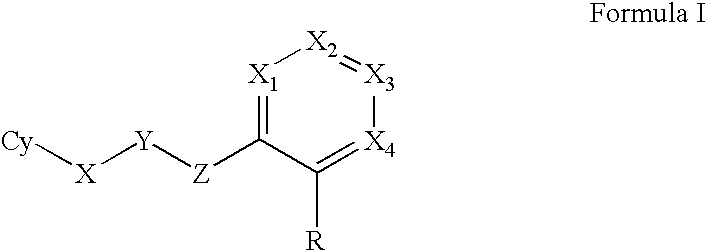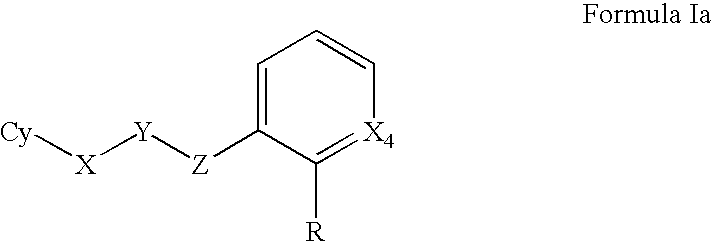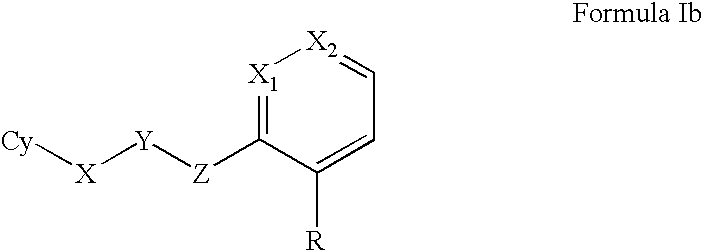Antimicrobial agents
a technology of antimicrobial agents and aromatic compounds, which is applied in the direction of antibacterial agents, biocide, heterocyclic compound active ingredients, etc., can solve the problems of high morbidity and mortality rates, pathogens with serious resistance problems, and the effectiveness of antibiotics is threatened by inexorable rise in the prevalence of microbial drug resistan
- Summary
- Abstract
- Description
- Claims
- Application Information
AI Technical Summary
Benefits of technology
Problems solved by technology
Method used
Image
Examples
example 1
Preparation of a Compound of Formula 4
[0725]To a solution of a compound of Formula 2 (1 equiv.) in pyridine, a compound of Formula 3 (1.2 equiv.) was added portion wise at about 0-5° C. The reaction mixture was allowed to come at an ambient temperature and stirred overnight. The solvent was evaporated under reduced pressure. Water was added to the residue, which was then extracted with ethyl acetate. The organic layer was washed with water, brine, and dried over anhydrous sodium sulfate. The solvent was evaporated under reduced pressure and the residue was purified by column chromatography to yield the required product.
example 2
Preparation of Compound of Formula 5
[0726]To a solution of compound of Formula 4 (1.0 equiv.) in dichloromethane (20-30 mL) was added Dess Martin Periodinane (1.5 equiv.). The reaction mixture was stirred overnight at an ambient temperature, filtered, and the mother liquor was washed with aqueous sodium bicarbonate solution. The organic layer was dried and evaporated under reduced pressure. The residue was purified by column chromatography to give the desired product.
example 3
Preparation of a Compound of Formula 9a
[0727]To a solution of a compound of Formula 9 (10.0 equiv., prepared according to Scheme I) in propanol (15 mL) was added a compound of Formula R8B(OH)2 (12.0 equiv.). The reaction mixture was degassed with argon for about 15 minutes. Tetrakis(triphenyl-phosphine) palladium (0) (1.0 equiv.) was added to the reaction mixture. Sodium carbonate (10.0 equiv.) in water was added to the reaction mixture. The reaction mixture was heated to about 100° C. and stirred for about 5 hours in dark under an argon atmosphere. The reaction mixture was filtered, the residue was concentrated and the product was purified by column chromatography.
PUM
| Property | Measurement | Unit |
|---|---|---|
| temperature | aaaaa | aaaaa |
| pressure | aaaaa | aaaaa |
| temperature | aaaaa | aaaaa |
Abstract
Description
Claims
Application Information
 Login to View More
Login to View More - R&D
- Intellectual Property
- Life Sciences
- Materials
- Tech Scout
- Unparalleled Data Quality
- Higher Quality Content
- 60% Fewer Hallucinations
Browse by: Latest US Patents, China's latest patents, Technical Efficacy Thesaurus, Application Domain, Technology Topic, Popular Technical Reports.
© 2025 PatSnap. All rights reserved.Legal|Privacy policy|Modern Slavery Act Transparency Statement|Sitemap|About US| Contact US: help@patsnap.com



